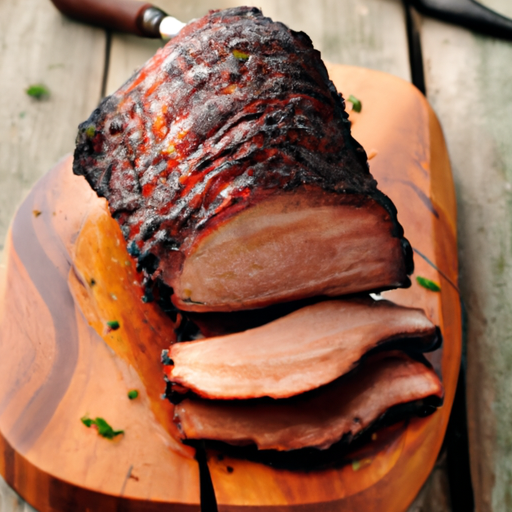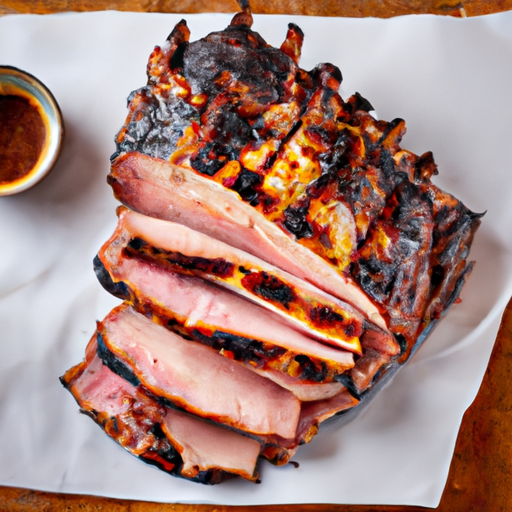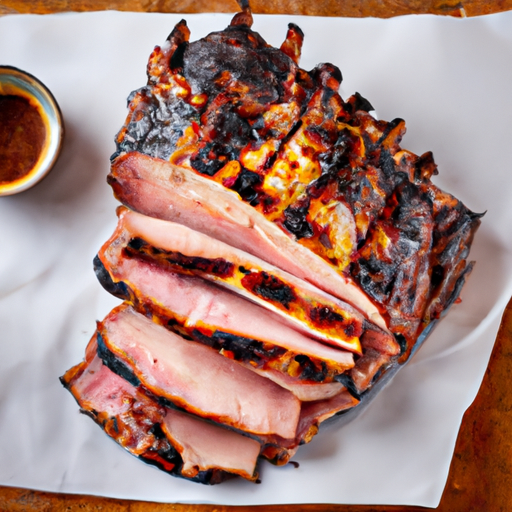You’re about to learn the secrets to cooking the most mouthwatering prime rib roast you’ve ever tasted. This article will guide you through the process step by step, ensuring that your roast turns out perfectly juicy and tender every time. From understanding the cooking times to mastering the key techniques, you’ll soon be impressing your friends and family with your culinary skills. Get ready to elevate your cooking game and become the ultimate prime rib roast connoisseur.

Choosing the Right Prime Rib Roast
When it comes to choosing the right prime rib roast, it’s important to understand the different cuts available. The most common cuts are bone-in and boneless prime rib. Bone-in prime rib tends to have more flavor and juiciness due to the bone, while boneless prime rib offers convenience in terms of carving and serving.
In addition to choosing between bone-in and boneless, you’ll also need to determine the size of the prime rib roast you’ll need. Generally, you will need about 1 pound of prime rib per person, but it’s always better to err on the side of having too much rather than too little. Keep in mind that larger roasts will take longer to cook, so plan accordingly.
Another important factor to consider when choosing a prime rib roast is evaluating its quality. Look for marbling, which refers to the fat running through the meat. More marbling usually means a more tender and flavorful roast. Additionally, make sure the roast has a bright red color, as this indicates freshness.
Preparing the Prime Rib Roast
Before you start cooking your prime rib roast, there are a few important steps in the preparation process. One of these steps is trimming excess fat from the roast. While some fat is necessary for flavor, excessive fat can lead to greasy, chewy meat. Trim any large pockets of fat, but be sure to leave a thin layer to keep the meat moist during the cooking process.
When it comes to seasoning options, the choice is yours. Classic seasonings for prime rib include salt, pepper, garlic, and herbs such as rosemary and thyme. You can either rub the seasonings directly onto the meat or create a paste by combining them with olive oil or butter. Allow the roast to sit at room temperature for about 30 minutes to allow the flavors to penetrate the meat before cooking.
For those looking to add extra flavor to their prime rib roast, brining is a fantastic option. Brining involves soaking the roast in a mixture of salt, sugar, and water for several hours or overnight. This process helps to tenderize the meat and infuse it with flavor. Just be sure to rinse off the brine before seasoning and cooking the roast.
Essential Equipment for Cooking Prime Rib Roast
To ensure that your prime rib roast turns out perfectly, there are a few essential pieces of equipment you’ll need. Firstly, a roasting pan is a must-have. This helps to elevate the roast for even cooking and collects any drippings for making mouthwatering gravy. Look for a sturdy, heavy-duty pan that can withstand the high heat of the oven.
A meat thermometer is another essential tool for cooking prime rib roast. This ensures that you cook the roast to the perfect temperature, resulting in tender, juicy meat. Look for a digital instant-read thermometer for the most accurate readings. It’s important to insert the thermometer into the thickest part of the roast, avoiding contact with any bones for an accurate reading.
During the cooking process, you’ll also need aluminum foil to tent the roast. This helps to hold in the moisture and prevent the outer layer of the roast from overbrowning. Make sure to use heavy-duty foil to avoid any tears or leaks during cooking.
Lastly, a carving set is essential for serving the prime rib roast. A good carving set will include a sharp carving knife and sturdy carving fork. This allows for clean, precise slices and helps to maintain the aesthetics of the roast.

Cooking Methods for Prime Rib Roast
There are several cooking methods you can choose from when it comes to cooking prime rib roast. Each method offers slightly different results, so it’s important to choose the one that suits your preferences and cooking capabilities.
Traditional oven roasting is the most common and straightforward method for cooking prime rib roast. This method involves preheating the oven, preparing the roasting pan, seasoning and tying the roast, roasting it at a specific temperature, and monitoring the internal temperature. We’ll delve deeper into the traditional oven roasting method in the next section.
Sous vide cooking has gained popularity in recent years and offers precise temperature control and consistent results. This method involves vacuum-sealing the seasoned roast, cooking it in a water bath at a specific temperature, and then searing the roast to achieve a flavorful crust.
For those looking for a unique twist on cooking prime rib roast, reverse searing is an excellent option. This method involves slow roasting the roast at a low temperature first, then finishing it off with a high-temperature sear. The result is a perfectly cooked roast with a delicious caramelized crust.
If you’re a fan of smoky and charred flavors, smoking the rib roast is a fantastic choice. This method involves using a smoker to slowly cook the roast, infusing it with rich smoky flavors. It requires a bit more time and effort, but the end result is well worth it for those who appreciate the unique taste of smoked meat.
Traditional Oven Roasting
Traditional oven roasting is a tried-and-true method for cooking prime rib roast. To begin, preheat your oven to the desired temperature. A common temperature range for roasting prime rib is 325-350°F (163-177°C). This lower heat allows for gentle cooking and even browning.
Next, prepare the roasting pan by placing a wire rack inside. This elevates the roast, allowing for hot air to circulate evenly around the meat. If you don’t have a wire rack, you can also place the roast directly on a bed of vegetables such as onions, carrots, and celery to elevate it.
Before placing the roast in the pan, season it generously with salt, pepper, and any additional herbs or spices of your choice. Some people prefer to tie the roast with kitchen twine to help maintain its shape during cooking. This step is optional but can be helpful for a more uniform shape.
Once seasoned and tied, place the roast in the preheated oven and let it cook until it reaches your desired level of doneness. It’s essential to monitor the internal temperature of the roast using a meat thermometer. For medium-rare, remove the roast from the oven when it reaches an internal temperature of 135-140°F (57-60°C). Keep in mind that the temperature will continue to rise as the roast rests.
After removing the roast from the oven, tent it loosely with aluminum foil and let it rest for at least 15-20 minutes. This resting period allows the juices to redistribute throughout the meat, resulting in a more tender and flavorful roast. Once rested, the roast can be carved into thick, juicy slices.
Sous Vide Cooking
Sous vide cooking is a precise and foolproof method for cooking prime rib roast. To prepare the roast for sous vide, season it with your desired seasonings. You can use a combination of salt, pepper, herbs, and spices to create a flavor profile that suits your taste.
Next, vacuum-seal the seasoned roast using a food-grade vacuum sealer or a zip-top bag with the air squeezed out. The vacuum-sealing process helps to lock in the flavors and ensures even cooking.
Once the roast is sealed, set up your sous vide machine according to the manufacturer’s instructions. Fill a large container or a pot with water and attach the sous vide machine. Set the temperature according to your desired level of doneness. For medium-rare, a temperature of 130-135°F (54-57°C) is recommended.
Carefully place the sealed roast into the water bath, ensuring that it is fully submerged. Cook the roast for the recommended amount of time based on its size and desired level of doneness. Sous vide cooking typically requires longer cooking times compared to other methods, but the results are worth the wait.
After the sous vide cooking is complete, remove the roast from the water bath and pat it dry with paper towels. Preheat a skillet or grill to high heat and sear the roast for a few minutes on each side until a crust forms. This adds texture and additional flavor to the roast.
Once the roast has been seared, let it rest for about 10 minutes before carving. This resting period allows the juices to settle and ensures a moist and tender roast. Slice the roast into thick, succulent pieces and serve.
Reverse Searing
Reverse searing is a unique cooking method that results in a perfectly cooked prime rib roast with a beautiful crust. To start the reverse searing process, preheat your oven to a low temperature, around 200-250°F (93-121°C).
While the oven is preheating, prepare the roast by seasoning it with salt, pepper, and any other desired herbs or spices. Let the roast sit at room temperature for about 30 minutes to ensure even cooking.
Once the oven is preheated, place the seasoned roast on a wire rack set inside a roasting pan. Insert a meat thermometer into the thickest part of the roast, making sure it doesn’t touch any bones.
Slowly roast the prime rib until it reaches an internal temperature of about 10-15°F (6-8°C) below your desired level of doneness. For medium-rare, remove the roast from the oven when it reaches an internal temperature of 120-125°F (49-52°C). This slow cooking process allows the meat to cook evenly and retain its juiciness.
After reaching the desired temperature, remove the roast from the oven and tent it loosely with aluminum foil. Meanwhile, preheat a skillet or grill to high heat. Sear the roast for a few minutes on each side, until a crust forms. This quick sear adds a caramelized, flavorful exterior to the tender, perfectly cooked interior.
Once the roast has been seared, let it rest for about 15 minutes before carving. This resting period allows the juices to redistribute and ensures a moist and tender prime rib. Carve the roast into thick, luscious slices and serve to impress your guests.
Smoking the Rib Roast
Smoking the rib roast adds a whole new dimension of flavor to the already delicious cut of meat. To begin smoking the roast, you’ll need to select the right wood chips. Popular choices include hickory, mesquite, apple, and cherry wood, each offering unique flavors. Soak the wood chips in water for at least 30 minutes before smoking to prevent them from burning too quickly.
Next, prepare your smoker according to the manufacturer’s instructions. Preheat the smoker to a temperature of around 225-250°F (107-121°C). This low and slow cooking method allows the smoke to permeate the roast and infuse it with rich, smoky flavors.
While the smoker is preheating, season the roast with salt, pepper, and any other desired seasonings. Make sure to pat the roast dry before applying the seasonings to ensure better adherence.
Once the smoker is at the desired temperature, place the seasoned roast on the grates. Add the soaked wood chips to the smoker box or directly onto the coals, depending on your smoker’s design.
Monitor both the smoke and the internal temperature of the roast using a meat thermometer. Maintain a steady temperature and add more wood chips as needed to maintain a consistent smoke level. For medium-rare, remove the roast from the smoker when it reaches an internal temperature of 130-135°F (54-57°C).
After removing the roast from the smoker, tent it loosely with aluminum foil and let it rest for about 15 minutes. This resting period allows the juices to redistribute, resulting in a juicier and more flavorful prime rib roast. Carve the meat into thick, smoky slices and savor the unique taste that smoking imparts.
Temperature and Cooking Times
Determining the internal temperature of your prime rib roast is crucial for achieving the perfect level of doneness. Different levels of doneness offer different flavor profiles and textures, so it’s essential to know the desired internal temperatures.
For a rare prime rib, the recommended internal temperature ranges from 120-125°F (49-52°C). The meat will be tender and juicy, with a deep red color.
Medium-rare prime rib has an internal temperature of 130-135°F (54-57°C). This is the most popular level of doneness, offering a balance between tenderness, juiciness, and a rosy pink center.
Those who prefer a medium prime rib should aim for an internal temperature of 140-145°F (60-63°C). The meat will have a slightly firmer texture and a pink center.
For a medium-well prime rib, a temperature of 150-155°F (66-68°C) is recommended. The meat will be slightly pink towards the center, but with less juiciness compared to the rarer levels of doneness.
Well done prime rib is cooked to an internal temperature of 160°F (71°C) or higher. The meat will have a uniform brown color throughout and a firmer texture.
Recommended cooking times for prime rib roast vary depending on the cooking method, size of the roast, and desired level of doneness. As a general guideline, plan for about 15-20 minutes of cooking time per pound of roast. However, it’s important to use a meat thermometer to accurately determine when the roast is done, as cooking times can vary.
Factors Affecting Cooking Times
Several factors can affect the cooking times of prime rib roast. The thickness of the roast, the starting temperature of the meat, and the efficiency of your oven or cooking equipment can all impact the cooking time.
Thicker roasts will generally take longer to cook than thinner ones. It’s essential to consider the size of your roast when determining the cooking time to ensure even cooking throughout.
Starting with a room temperature roast will help it cook more evenly and reduce the overall cooking time. If your roast has been refrigerated, allow it to sit at room temperature for at least 1 hour before cooking.
The efficiency of your oven or cooking equipment can affect the cooking time as well. Make sure to calibrate your oven’s temperature and use a reliable meat thermometer to ensure accurate cooking times.
Tips for a Perfect Prime Rib Roast
To round off your journey to a perfect prime rib roast, here are some tips that will help you achieve outstanding results every time.
Using a meat thermometer is crucial in ensuring that your prime rib roast is cooked to your desired level of doneness. Invest in a high-quality digital instant-read thermometer for the most accurate readings.
Allowing sufficient resting time after cooking is essential. This ensures that the juices redistribute throughout the meat, resulting in a more tender and moist roast. Aim to let the roast rest for at least 15-20 minutes before slicing.
Don’t be afraid to customize your seasonings and rubs. Experiment with different combinations of herbs, spices, and marinades to create unique flavor profiles that suit your taste preferences.
If you’re feeling adventurous, try experimenting with different flavors and marinades. From red wine and garlic to Asian-inspired soy and ginger, there are endless possibilities when it comes to adding exciting flavors to your prime rib roast.
Lastly, practice your carving techniques to ensure beautifully sliced servings. Use a sharp carving knife and steady slicing motions to achieve uniform slices that are easy to serve and enjoy.
By following these tips and exploring different cooking methods, you’ll be able to master the art of cooking a perfect prime rib roast. Whether you choose traditional oven roasting, sous vide cooking, reverse searing, or smoking, your prime rib roast is sure to be a showstopper at any gathering. So gather your ingredients, fire up your oven or smoker, and get ready to impress your guests with a tender, juicy, and flavorful prime rib roast.
